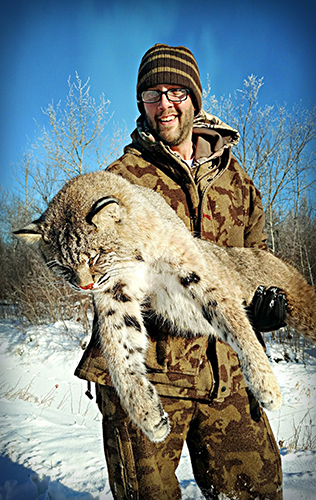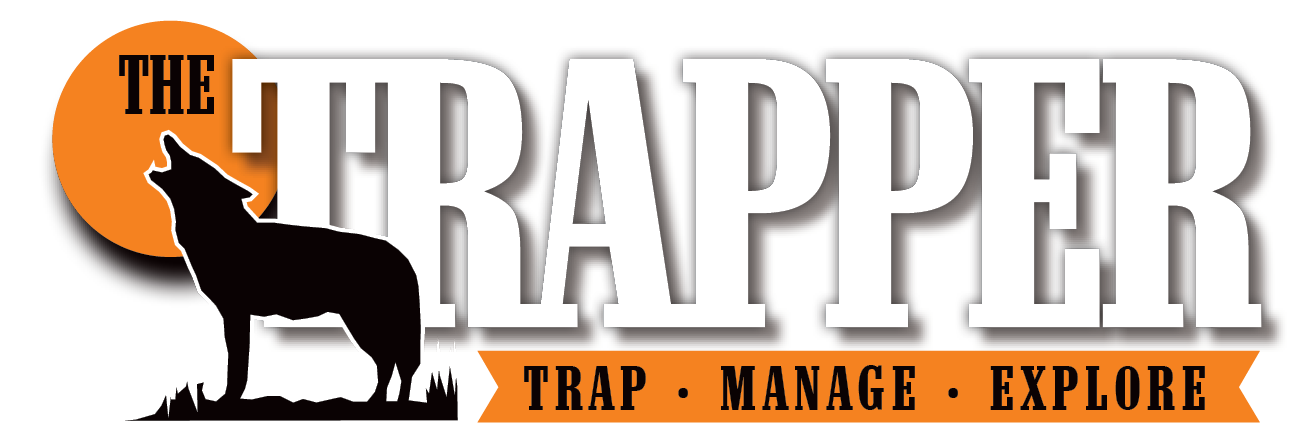By Matthew J. Breuer
The bobcat, or lynx rufus, is arguably my favorite critter that leaves a track on U.S. soil. Their curiosity, elusiveness, solitary ways and fierce hunting tactics make me love them more than most other animals. As a longtime trapper, the respect that I have gained for them runs deep. They don’t follow the rules of trapping, and pretty much do their own thing. They are the same way when it comes to calling.
I find myself thinking about cats on nights when I cannot sleep. I also find myself following cat tracks during the off-season, for miles, just to see what makes them tick. I do whatever I can to try to understand them, including studying the behavior of my farm cats. This deep respect has led to a change in how I pursue them, the cats that I choose to harvest, and which cats I decide to let go.
An Eye-Opening Moment
For many years, any bobcat that came to a call or found one of my snares or foothold traps was a giant bonus. I loved being close to all of them, regardless of sex or size. I’ve harvested cats weighing anywhere from 17 pounds to more than 40 pounds, and each of them was a trophy to me. However, on a beautiful winter day with two great houndsmen, the way that I looked at cats changed forever. Every cat is still special, but many that I find now get a free pass.
Hound Hunting For the Right Cat
The snow was falling when I received a call from Wes Olsen. Wes is a hardcore hound hunter with a pack of outstanding dogs that he runs all over the country, almost year-round. Wes stated that the forecast was perfect, and that if I wanted to get on a good cat, I’d better meet him at 4:00 a.m. that Sunday. At 4 in the morning his truck looked like any other heavy-duty truck. But, once we were in bobcat country, the truck turned into a hound-hunting dream machine. The bed was loaded with a snowmobile and dog boxes. The sled even had a dog box. Each dog was equipped a Garmin Alpha collar, and the collars were all linked into the Garmin GPS on the dashboard of the truck. Bright LED lights to shine onto the road and trail edges were mounted on each side of the rig.
We arrived, the LED lights were flipped on as we drove down a trail, and every fresh track was inspected. When a bobcat track was located, the spot was marked so that we could come back to it later in the day. We got a call from another houndsman named Jordan Stewert, stating that he had found a big track that we needed to investigate.
Wes and Jordan put their dogs on the track, and we watched the dogs on the Garmin. The chase was on, and the cat was cooperating. Baying and treeing weren’t up this cat’s alley, so I had to shoot him as he crossed an opening. It turned out to be my largest cat, and I’ll forever remember that moment. But, that moment wasn’t the thing that sticks with me the most. We ran several cats that day, letting one beautiful cat go that left me quite perplexed. After many conversations with Wes and Jordan, I realized that while every cat is special, only the larger toms should be taken. My eyes were opened, and my bobcat pursuits and tactics changed drastically on that sunny winter morning.
Running bobcats with hounds isn’t for everyone. Owning hounds is a year-round commitment, especially if you have several, and you want them all to do what they need to do during the season. If you want to try chasing cats with hounds, I suggest hiring a guide, or finding someone who is well-versed in the techniques, and can separate the large toms from young cats and females. Tracks will tell the tale for the most part. Then, when the cat is visible, it’s an easy choice, since you can really size up an animal that is bayed or treed.
Trapping the Right Cat
Like any other trapper, I like to scout areas heavily. I won’t make a set for bobcats unless I find cat sign. Tracks, scat, or better yet, trail-camera photos. Once you can correlate the size of a cat track to the size of the animal that made it, you’ll be able to trap cats that you’re proud of and conserve the smaller ones.
For me, a cat track that is close to 2 inches long and 2.5 inches wide is a large cat, and one that I want to target. A track that is less than 1.75 inches long and 1.5 inches wide tells me that there’s a younger cat in the area, and I’ll shy away.
I’ve almost completely abandoned conibear traps for bobcats. I prefer footholds, as I can release a cat if it’s not large enough to harvest. For snaring, I like cable restraints with locks or stops, so that the animal is still alive when I approach the set. Conibears and cinch snares are reserved for remote areas where I’ve located a really good track and know that a cat that I want to harvest is in the area.
Without a doubt, trail cameras have revolutionized how we approach hunting and trapping. I have Bushnell Wireless Trophy Cam HDs that will actually send photos to my phone within 60 seconds of being taken. Talk about revolutionary! Some folks may cry that it’s an unfair practice or nontraditional — but I feel that cameras are efficient and conservation-minded.
For trapping, I like to get baits going well before the season, and I’ll put trail cameras next to those baits. That way I can take an inventory of what’s in the area. If I see photos of a female bobcat with two kittens, I’ll obviously abandon that area, because I don’t want to run the risk of taking an active mother. However, if I see a tom on camera that looks like one that I want to take, I’ll double my efforts in that area.
I prefer to use Primos Truth Cams and Bushnell Trophy Cams or Aggressors. These cameras provide me with high-quality images and videos that are almost as satisfying as harvesting the actual animal. Be sure to measure an object near where the animal was standing in any photos that you capture, that way you can get a rough estimate on the size of the critter. If tracks are found — even better. A bobcat that stands 20 inches high is a pretty nice cat, and one that I will pursue. Anything that I estimate is less than 18 inches tall will likely get a pass.
Calling In the Right Cat
The most difficult part about deciding on whether or not to harvest a cat that comes to a call, is just getting a cat to come in to a call. I run a FoxPro Shockwave with the FoxJack 5 Decoy attachment. I rarely run my call without the FoxJack, because I’m typically calling in bobcat country, and the decoy appeals to the bobcat’s sense of sight and their strong curiosity.
Bobcats are very visual creatures, so using the call to appeal to their urge to hunt or feed and then finishing the attraction with the decoy is typically the progression. Plus, the decoy should take their eyes off of me as I adjust for a shot. Prey distress sounds work well, hares and birds often being the best. Almost every cat that I’ve called in has either come to the BayBee Cottontail or Nutty Nuthatch calls.
My best advice for taking the right cat in a calling scenario is to calm your nerves, really look at the bobcat in front of you, and make an informed decision on whether the cat looks like an adult or not. It can be pretty tough with how fast it all happens, and the amount of adrenaline that’s pumping when an animal shows up to the call.
Logic Behind Chasing the Right Cat
While the fur market is in shambles, nice bobcats still bring in decent money. Why not maximize your dollar and go after the adult cats? This, in turn, might allow for the population to grow. We’re all going to want more cats around when the fur market rebounds.

Photo credit: Matthew J. Breuer.
The U.S. population of the North American bobcat is estimated to be somewhere between 700,000 and 1,300,000, but that doesn’t mean proper management isn’t important. Bobcats aren’t anywhere near being endangered, even though they’re animals that are rarely seen or heard. Something so elusive and beautiful deserves our respect, and is something that we should all hope will survive well beyond our lifetime, allowing future generations to enjoy them like so many of us have over the years.
— Matthew J. Breuer runs Northcountry Guide Service & Promotions in Bemidji, Minnesota.




